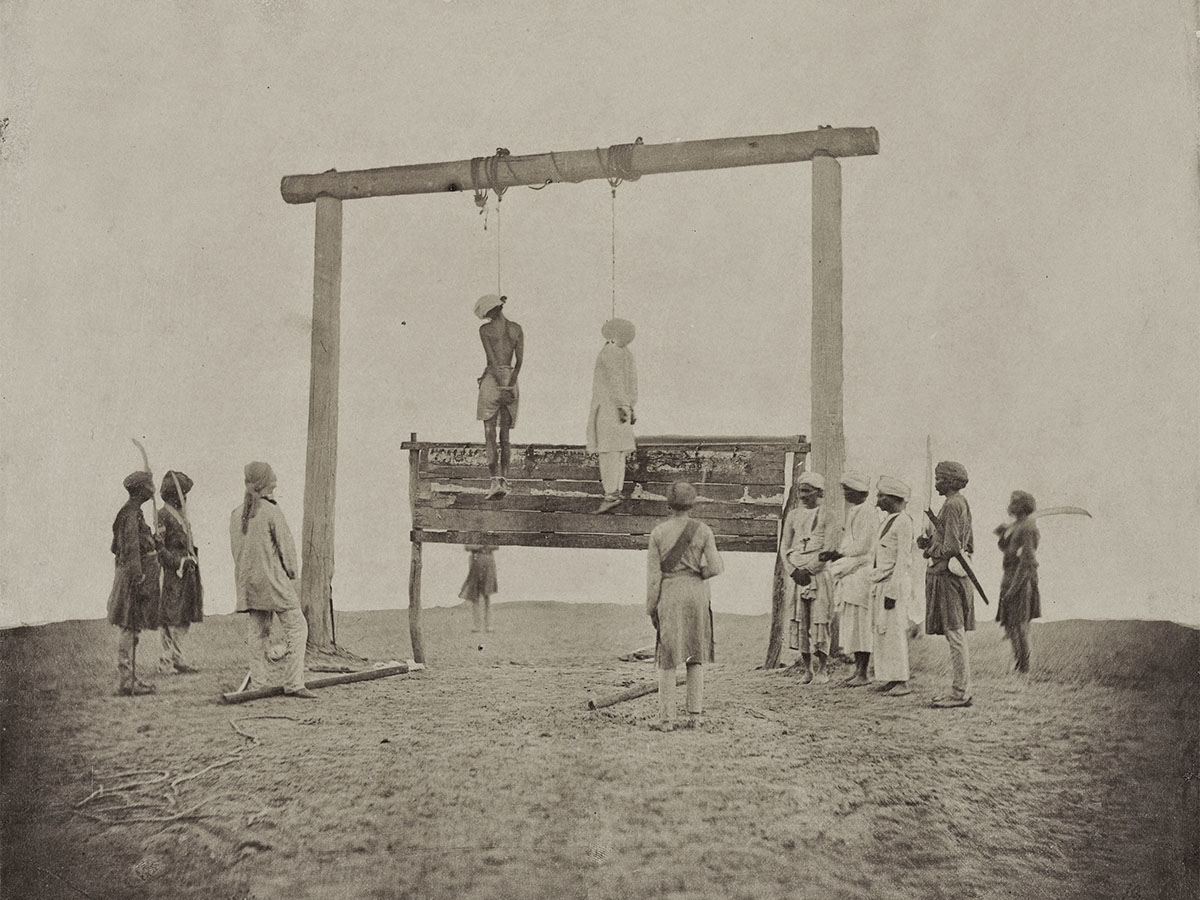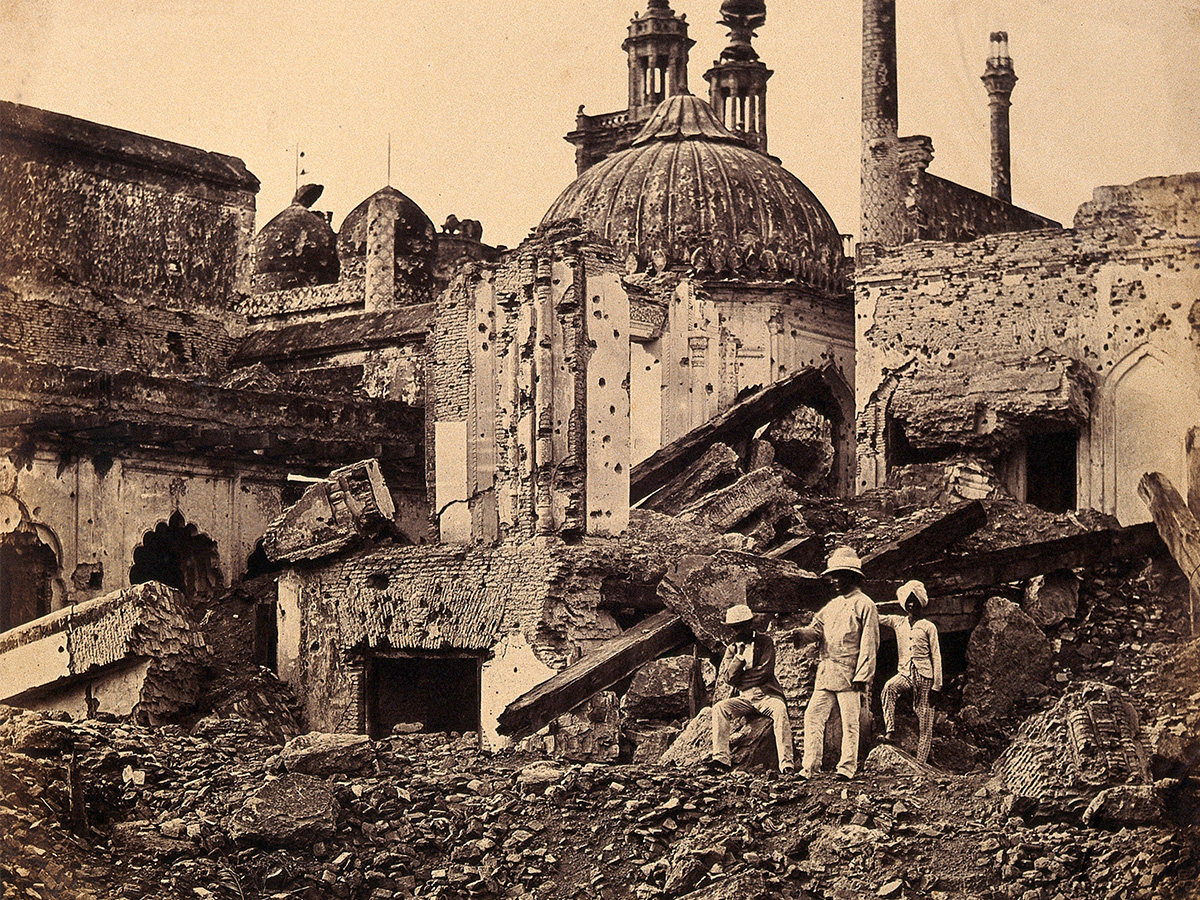ARTICLE
Felice Beato
His subsequent recognition as a serious photographer and collaborator is evidenced in his photographs of sacred sites and monuments from the Middle East and Mediterranean, which he made during his expedition the following year and which bore the signature “Robertson, Beato & Co.” (where the last word is thought to allude to Antonio). However, the subsequently used signature of “Felice Antonio Beato,” particularly in photographs made in Egypt and East Asia – after Beato began his own practice – has also caused some confusion over the attributions. It was later found that the signature represented the names of both Beato brothers thought to have been involved in their production.
In 1858, Beato set out for Calcutta (now Kolkata), after having heard of the Revolt that had broken out a year prior. Once there, he took the help of army officers to go about recording scenes from the aftermath of the uprising, travelling to its major staging points in Delhi, Agra, Lucknow and Cawnpore (now Kanpur). At these sites, he produced images of the devastation of battle and its human toll, in order to create a sense of immediacy and to provoke shock and awe in his European audiences. He sometimes arranged and staged scenes in ways that seemed to celebrate war. In at least one instance, he had skeletal remains exhumed and arranged for an image, driven both by the need to recreate the scenes of battle (and more particularly, the defeat of the enemy) as well as a desire to meet the growing commercial appeal of high drama among his Western viewership. Some of his best-known works from this time are of the hanging of mutineers in Lucknow, known as the Execution of Mutineers (1858); the yard of the ruined Sikandra Bagh palace, strewn with skeletons; and members of the Hodson’s Horse Regiment.
While in India, Beato also produced a set of architectural studies that included images of Taj Mahal, Agra; the imambaras of Lucknow; the Golden Temple in Amritsar; the Qutub Minar and Jama Masjid of New Delhi; and views of Benares (now Varanasi). The small number of portraits of army officers — and occasionally of Indians — that he produced demonstrated the prevailing convention of posing the colonisers and the colonised differently to reinforce the hierarchy While in Calcutta, he was joined by Antonio who remained in the city to run his own photographic studio till 1859.
In 1860, Beato ended his partnership with Robertson and travelled to China to document the British campaign in the Second Opium War. He initially photographed local life and architecture in Hong Kong and Canton (now Guangzhou), but turned his focus to the war when it began to gain momentum. Following the war, Beato moved to Japan, where in a marked departure from his previous assignments, and using the wet-collodion method for the first time, he photographed landscapes, architecture, temples, people in their traditional costumes, and even the Dai Bouts (Great Buddha) idol in Kamakura, which had never been photographed by a Westerner before. He established a commercial photography studio with photographer Charles Wirgman in 1864, producing the first photographic albums and hand-coloured photographs in the country. He left Japan twenty years later, in 1884, after having established a thriving market for commercial photography there, returning briefly to war photography and travelling through Korea and Sudan. After undertaking a tour of its northern provinces of Burma (now Myanmar), he photographed its people, architecture and landscapes. Upon his return to the capital, he decided to settle there, opening and running a shop of antiques and collectibles, while carrying on his professional photography.
Beato retired to Florence, Italy, some years later, after having spent much of his life travelling across Asia. He spent the remainder of his years there, living on a small pension from the British consul.
Bibliography
Our website is currently undergoing maintenance and re-design, due to which we have had to take down some of our bibliographies. While these will be re-published shortly, you can request references for specific articles by writing to hellomapacademy@map-india.org.








